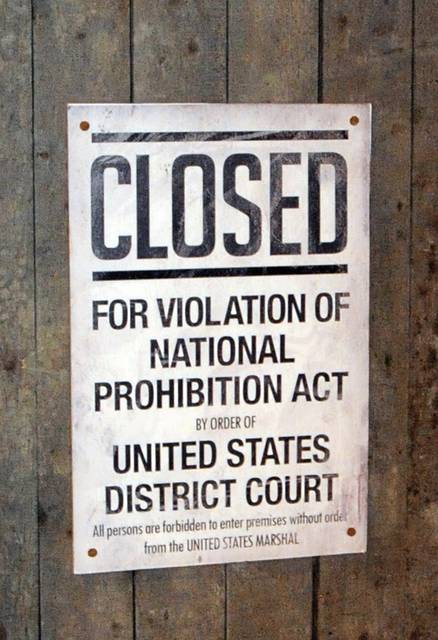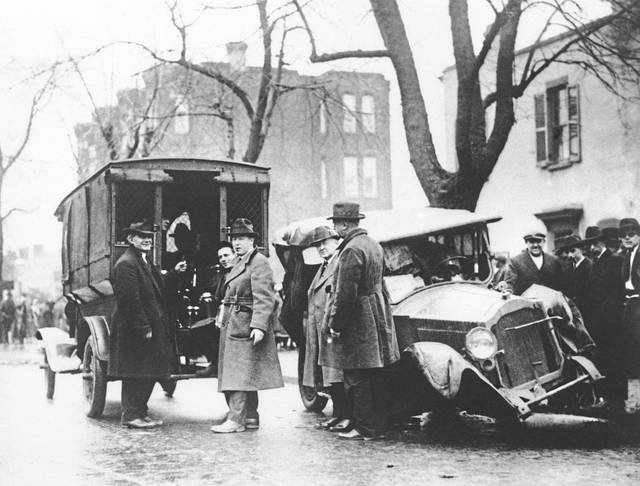9 facts and figures you might not know about Prohibition
One hundred years ago, America went dry.
The long-fought temperance movement to rid the United States of bars and booze finally came to fruition. The 18th Amendment banned the “manufacture, sale or transportation of intoxicating liquors for beverage purposes.” The Volstead Act provided a way to enforce it — starting on Jan. 17, 1920.
Here are some facts and figures related to Prohibition:
Let them have beer
President Woodrow Wilson vetoed the National Prohibition Act, also known as the Volstead Act, believing people should be allowed to at least drink beer. Congress disagreed and overrode his veto.
Drinking not banned
Federal prohibition only dealt with the making, selling and transporting of alcoholic beverages, not drinking them. Many people bought and stored stockpiles of alcohol before the law went into effect.
300,000
Estimated number of saloons throughout the United States in 1900, when the population was 76 million.
22.5 gallons
Per capita consumption of liquor, wine and beer in United States (1915).
65%
Approximate portion of states with dry laws before the 18th Amendment.
Of the roughly 3,000 counties nationwide in 1917, some 2,086 of them were dry. That included 11 of Pennsylvania’s 67 counties, with another 1 million of the state’s 8 million residents at the time living in dry territories.
14,000
Number of brewers, distillers and other businesses listed in the Pennsylvania liquor license directory in 1913.
Federal tax records at the time showed nearly 24,000 people in the state paying government liquor taxes, meaning nearly 10,000 speakeasies already were in operation.
Speakeasy
Term for an illegal bar, said to have originated in McKeesport in the late 1800s and gained popularity during Prohibition.
Other names for illicit watering holes included blind pig and blind tiger. Prohibition, or the “noble experiment,” also helped popularize terms such as bootlegging, bathtub gin, giggle water and home brew.
Near-beer
All beverages containing more than a half-percent of alcohol were illegal. Many breweries turned to making ice cream, soft drinks and low-to-no alcohol products called “near beer.” That included Pittsburgh Brewing Co.
Anheuser-Busch made Bevo, the most popular non-alcoholic malted beverage.
Law enforcement
A federal Prohibition Unit of the Bureau of Internal Revenue was first tasked with enforcing Prohibition laws, until the Prohibition Bureau was created under the Treasury Department. Other agencies involved in enforcement included local police, U.S. Marshals, Postal Service, Internal Revenue Service, Federal Bureau of Investigation and U.S. Customs.
The first Prohibition agent in the Pittsburgh district was J.W. Connors, followed by John Exnicios (“the terror of the Pacific Coast”) and a string of others.
Sources: Library of Congress, National Archives, Smithsonian Magazine, HistoricPittsburgh.org, Cyclopedia of Temperance, Tribune-Review research
Remove the ads from your TribLIVE reading experience but still support the journalists who create the content with TribLIVE Ad-Free.



